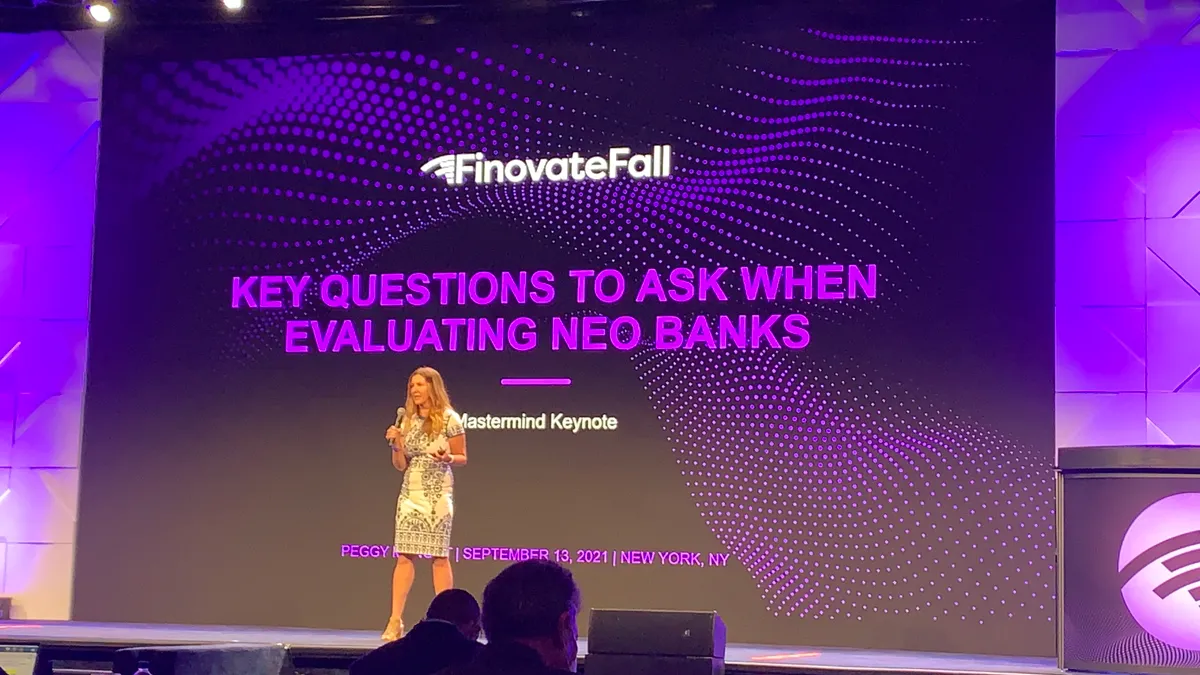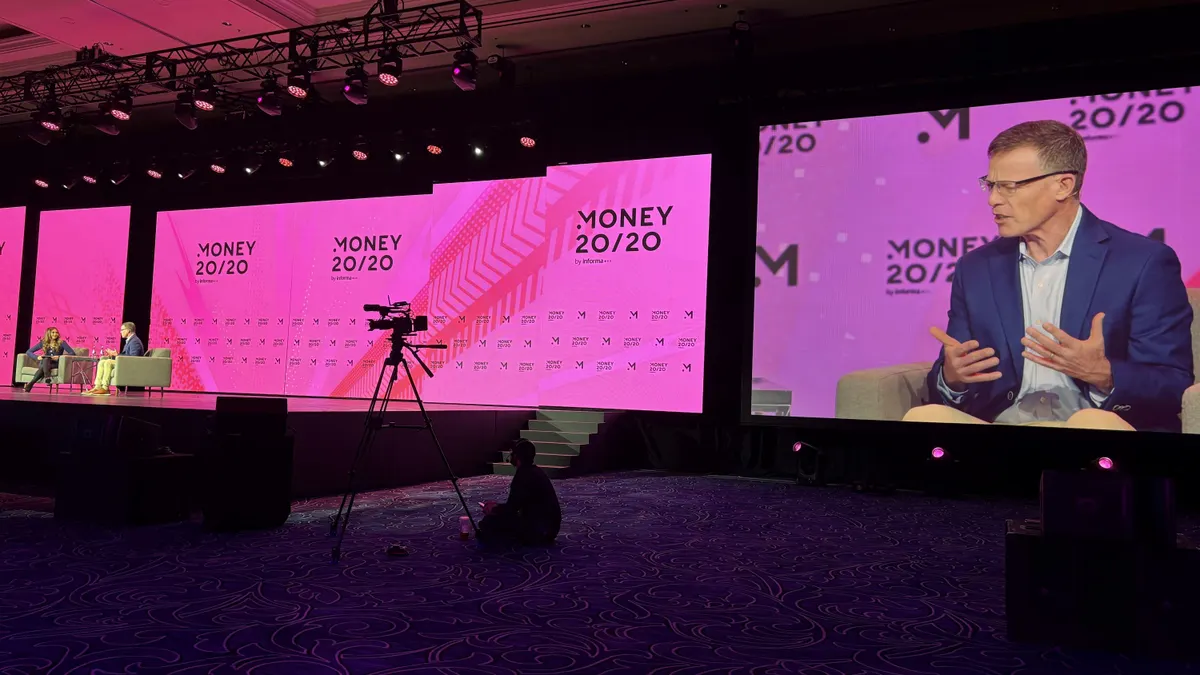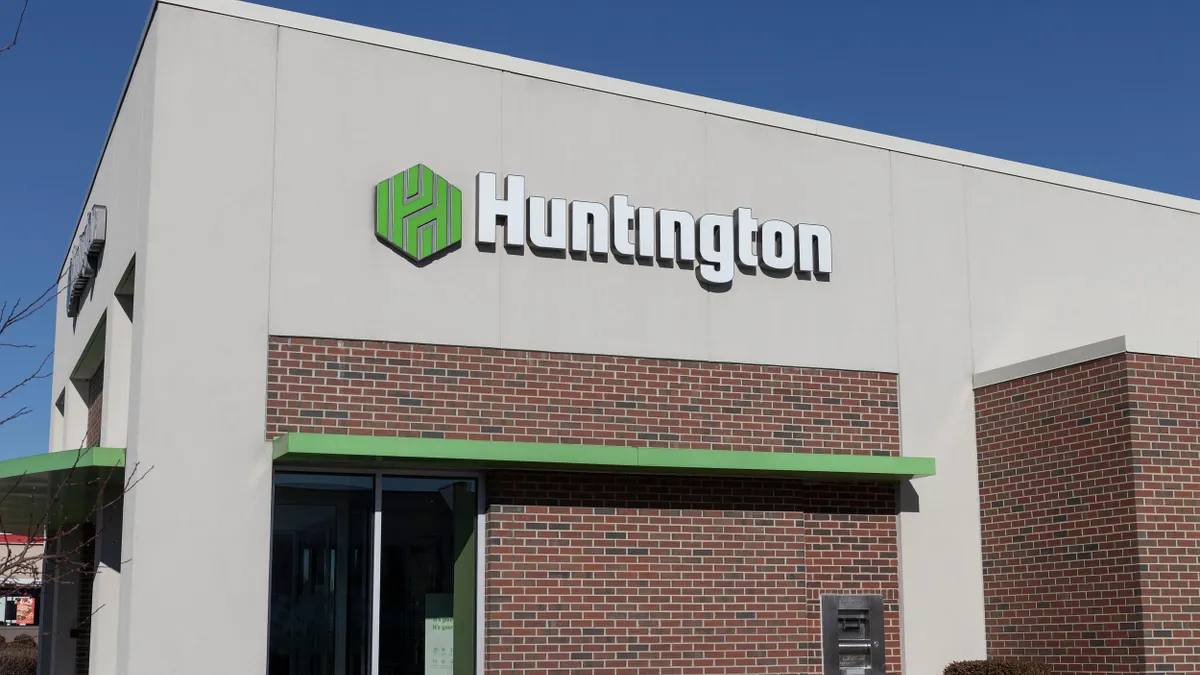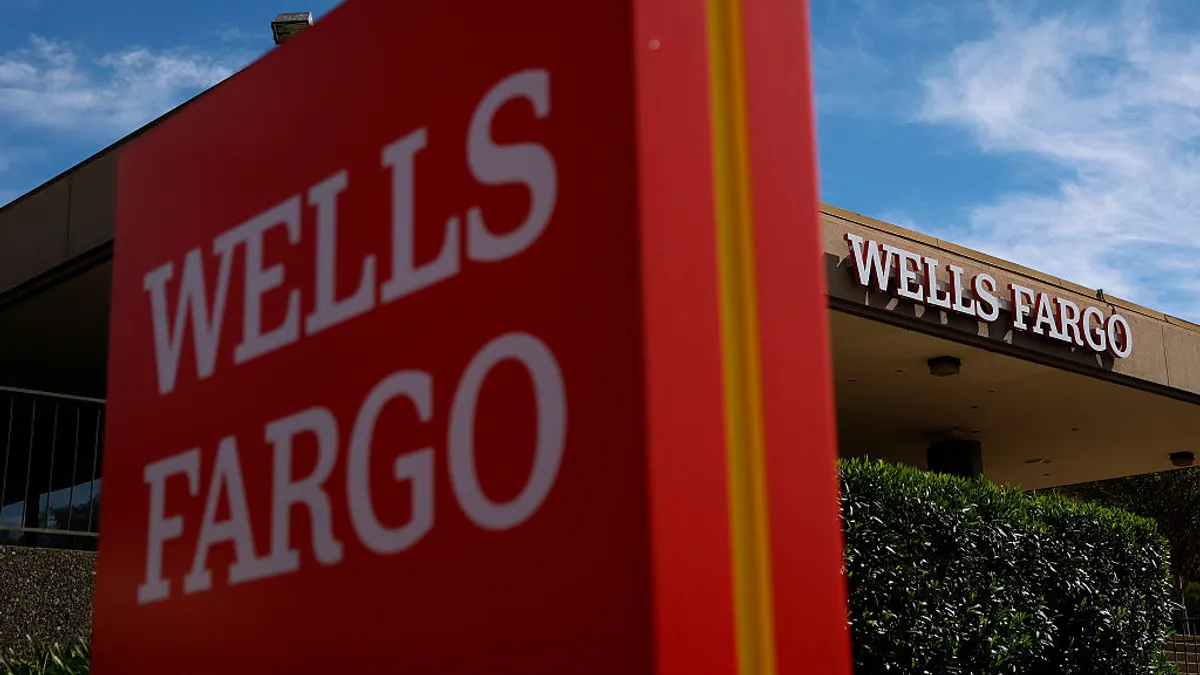NEW YORK CITY — Neobanks have seen explosive growth over the past several years, both from players like Chime and Varo, who are targeting the broad consumer market, and a number of affinity challengers: fintechs offering specialized banking services for underserved or underrepresented groups.
While Chime and Varo continue to turn heads with their growing user numbers and massive funding rounds, it's the latter category — the affinity neobank targeting the vertical market — that is poised to experience its own market expansion soon, PayPal Ventures Operating Partner Peggy Mangot said Monday during a keynote address at the Finovate Fall conference.
"We're seeing so many of those emerge right now. It's incredibly exciting. What these vertical neobanks are doing is they're really marketing to appeal to a specific customer cohort," Mangot said referencing niche fintechs like the Asian-American community-geared Cheese and the LGBT-friendly Daylight as examples of affinity neobanks whose services address the needs of a specific community. "I have a hypothesis that there will be breakout verticals, and consumers will take on that additional relationship."
Consumers already use a number of fintechs or banking service apps to address their financial needs, Mangot said. An additional service that brings a sense of community and affiliation to a group or cause is an attractive proposition for some consumers, she added.
"A consumer may already have an account with Venmo for peer-to-peer payments, use Robinhood for equities and stocks, SoFi for student loan repayments, Empower for short-term loans, Ellevest for passive investing, as well as have a Bank of America account they don't want to close, but are transacting with a little bit less," Mangot said. "Then along comes a fintech for all. A perfect one that's targeting us, and it's providing us a community and benefits. Will they add No. 7? Yes, as long as enough value is exchanged."
But aspiring neobank founders, as well as those looking to invest in these startups, need to evaluate whether or not the fintech is "different enough," Mangot said.
"Is it different enough to persuade a cohort to create a relationship with this vertical bank? Is it different enough than a mass market neobank like a Chime or a Varo? Is it different enough than an account they may already have at a Chase or Bank of America?" she said.
The neobank advantage
In general, neobanks, whoever their target audience may be, have several key advantages over traditional institutions, said Mangot, who was the former general manager and senior vice president of innovation at Wells Fargo before joining PayPal’s venture arm last year.
"I don't think I'm oversimplifying when I say there's two main advantages that neobanks have," Mangot said. "The first is product velocity, and the second is marketing effectiveness."
Not only does newer technology give neobanks the ability to ship their products at speeds much faster than traditional large financial institutions, but the agility of their compliance and risk management teams contribute to that speed as well, Mangot said.
"Neobanks have created these highly accountable, right-size legal risk and compliance teams, and the advantages of those teams is that they can assess risk, document risk mitigation and come to a decision and approve the new product upgrade," she said. "And they can do it in a period of time that's much faster than traditional financial institutions, and this gives neobanks an incredible advantage."
On the marketing side, Mangot said successful neobanks are savvy when it comes to digital acquisition.
"They know their numbers. There's no confusion about customer acquisition costs or lifetime value of the customer," she said. "Contrast that with traditional financial institutions and there are three disadvantages that I see. The first one I would call brand vs. performance."
Traditional financial institutions have deep experience in broad brand marketing campaigns, Mangot said. But where they are lacking is in nimble digital acquisition and the ability to pivot to new channels depending on what may or may not be working.
While managing multiple channels such as a website, app and brick-and-mortar branches, it’s difficult for traditional banks to attribute the marketing spend back to customer acquisition across channels and products, Mangot said.
"The last area is just simply data," Mangot said. "These large traditional financial institutions have many products, huge budgets, and they have many agencies and third parties in between them and data. So it's much harder for them to essentially know their true [customer acquisition cost] and a true [lifetime value], even for basic banking."






















